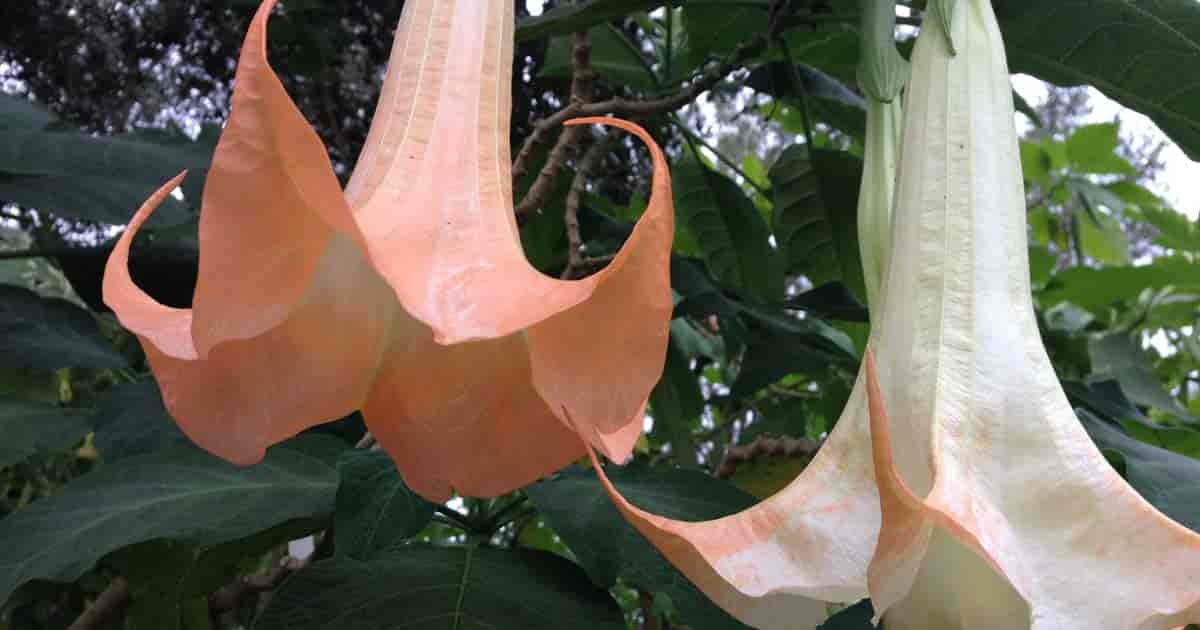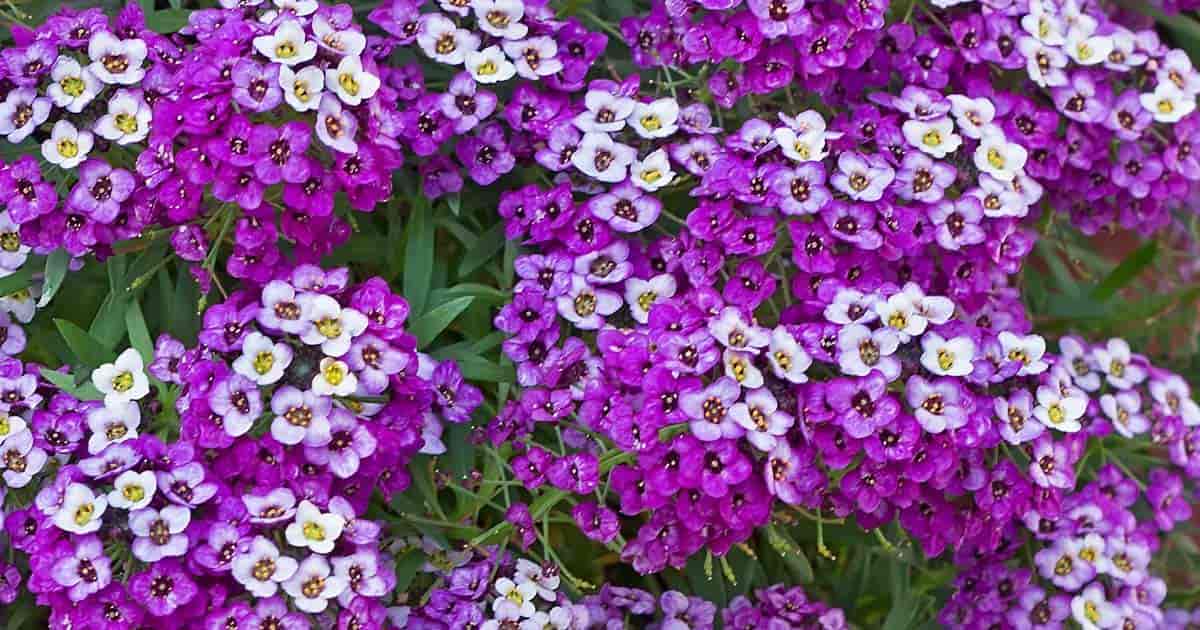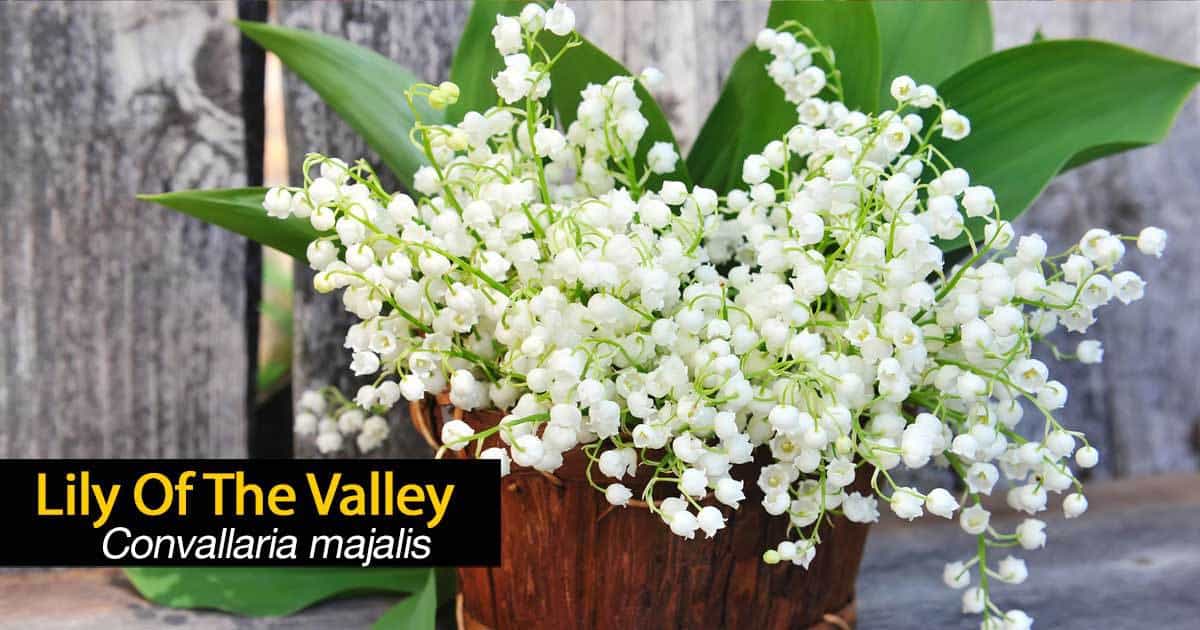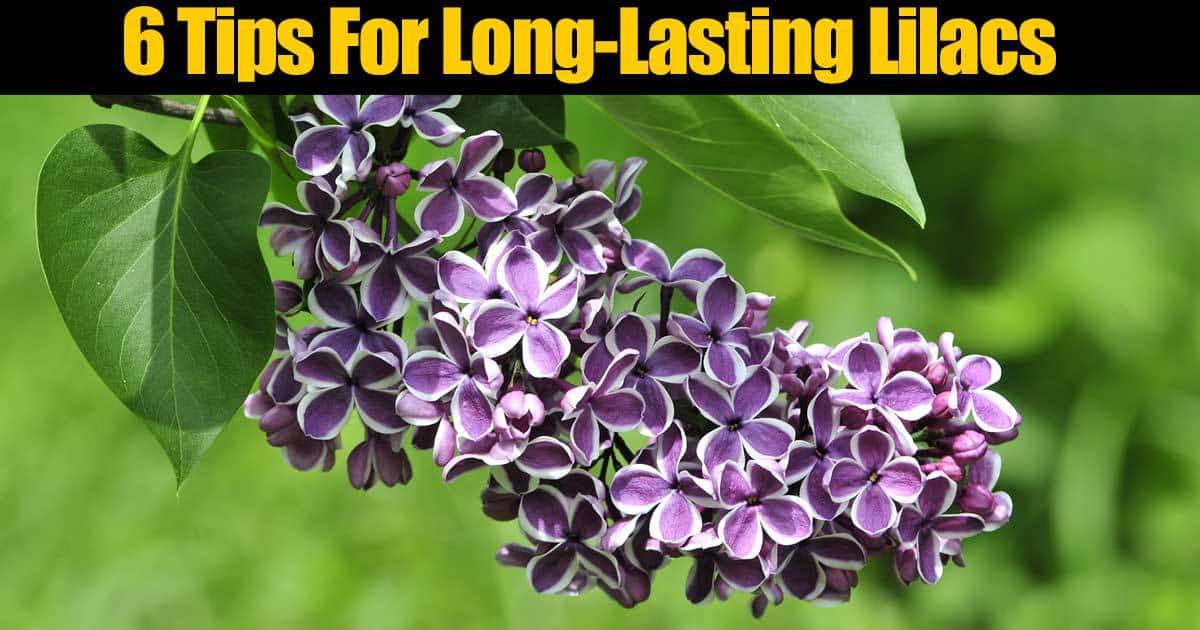Fragrance in the “garden” is often overlooked. A fragrant flower scent can play an important role in what you experience while outdoors.
A charming fragrant flower garden is a wonderful addition to the landscape. Fragrant flowers to plant, attract birds, bees, butterflies and other beneficial fauna to your garden.
 A beautifully scented bower is also an excellent place for you to relax, socialize and make the most of your outdoor living space.
A beautifully scented bower is also an excellent place for you to relax, socialize and make the most of your outdoor living space.
In this article, we will share twenty-one fragrant shrubs and flowers for you to choose from to plant your own, personalized fragrant garden. Read on to learn more.
Fragrant Plants Help Create An Eclectic Garden
Because fragrant flowers usually have a short bloom time, it is best to choose a wide variety of plants and shrubs to fill your fragrant garden.
Select from fragrant perennials, shrubs and fragrant annuals that provide beautiful, fragrant flowers for garden as well as attractive foliage and interesting bark and other features.
 In this way, when one plant finishes blooming another will be at the ready, and you will be able to enjoy some aspect of your garden at any time of year.
In this way, when one plant finishes blooming another will be at the ready, and you will be able to enjoy some aspect of your garden at any time of year.
Luckily, the many choices in easy-care fragrant plants can allow you to enjoy a beautifully scented garden all year round.
Best Fragrant Annuals
 Devil’s Trumpet (Datura) is a night-blooming plant with big, pretty trumpet-shaped blossoms in purple or white. These spicily scented trumpets reach for the sky.
Devil’s Trumpet (Datura) is a night-blooming plant with big, pretty trumpet-shaped blossoms in purple or white. These spicily scented trumpets reach for the sky.
 Angel’s Trumpet tree (Brugmansia) is related to Datura and is similar, but its trumpet or bell-shaped flowers are pendulous rather than facing upward.
Angel’s Trumpet tree (Brugmansia) is related to Datura and is similar, but its trumpet or bell-shaped flowers are pendulous rather than facing upward.
NOTE: When buying remember the Red Angel Trumpet Brugmansia sanguiena has no real fragrance.
 Witches’ Weed, Moonflower or Jimson Weed is a wild variety of Datura that is native to North America and can be found growing on the side of the road in many areas.
Witches’ Weed, Moonflower or Jimson Weed is a wild variety of Datura that is native to North America and can be found growing on the side of the road in many areas.
All varieties are hardy in USDA Zones 8-10; however, they self-seed readily and can be grown as annuals in any zone.
These plants like full sun, regular watering, and fertile soil.
Be careful not to ingest the plant or allow pets or children to do so as all parts are poisonous.
Evening Scented Stock Flower (Matthiola longipetala) is another night bloomer that displays pretty, highly scented pastel flowers. Like Datura and Brugmansia, the fragrance of these flowers is spicy and memorable.
This annual prefers cooler temperatures (60°-80° degrees Fahrenheit). In warmer climates, it does well when planted as an outdoor annual in the autumn and winter months.
Evening Stock does well as a container plant and makes an excellent addition to porches, patios and window boxes.
The plant likes to have a few hours of bright afternoon sunlight daily.
 Heliotrope (Heliotropium) can be grown as a perennial in warm regions or as an annual in cooler areas.
Heliotrope (Heliotropium) can be grown as a perennial in warm regions or as an annual in cooler areas.
The plant produces abundant sweetly scented blossoms in shades of white, mauve and purple.
Their scent is often likened to vanilla, almonds or cherry pie.
Heliotrope is hardy in USDA zones 10-11, but it can be kept as an annual in all areas.
It does well in containers, and will adapt nicely to being kept indoors as a houseplant during the winter.
Petunias come in many variations, but the most fragrant blossoms are found on old-fashioned white or purple vining varieties. Examples include:
- Double Purple
- Frills & Spills
- Candy Floss
- Surfinias
- Priscilla
 These annuals do well in hanging baskets, planters or as bedding plants. They like moist, rich soil and about six hours of bright sunlight daily.
These annuals do well in hanging baskets, planters or as bedding plants. They like moist, rich soil and about six hours of bright sunlight daily.
Learn more on Petunia care in pots and baskets
They tend to grow enthusiastically and become leggy, so keep them trimmed and deadheaded to encourage bushier growth and more blooms.
These plants are winter hardy in USDA hardiness zones 10-11. In cooler areas, plant as an annual.
If allowed to go to seed, these plants are very likely to self-seed and return on their own year-after-year. [source]
 Sweet Alyssum (Lobularia maritima)
Sweet Alyssum (Lobularia maritima)
Sweet Alyssum (Lobularia maritima) has a luscious, rich fragrance and blooms from springtime until early autumn. This low growing bedding plant produces abundant mounds of flowers in shades of pink, mauve, and white.
Seed can be sown directly into well-prepared flower beds or containers after all danger of frost has passed. Once it is established, it will self-seed and return on its own every year. This plant is winter hardy in USDA Hardiness Zones 7-11.
Alyssum is a good choice as a border plant, and it is also an excellent choice for adding contrast and softness to a rock garden.
Sweet Peas (Lathyrus odoratus) are wonderful old-fashioned flower garden plants that grow easily from seed and provide billowing, beautiful, multi-colored, sweetly scented flowers all summer long. The long-lasting flowers are attractive to bees and butterflies and do well when used in flower arrangements.
To grow Sweet Peas from seed, soak the large pea-like seeds in water overnight and plant them indoors or in a cold-frame late in the autumn to have seedling to transplant outdoors in the spring. Alternately, you can sow the seeds directly into the soil early in the spring. Sow the big seeds fairly deep in well-tilled soil to protect them in case of frost.
Sweet Pea tends to grow tall and leggy, so it’s a good idea to pinch the plants back to encourage strong stems, bushy growth, and more flowers. You may need to provide support for the plants as they grow.
Sweet Peas come in both annual and perennial varieties. The annuals have more intense fragrance than the perennials. These plants are winter hardy in Zones 8-10.
Best Choices In Fragrant Perennials
Sweetly scented Daffodils (Narcissus) signal the beginning of spring in many places around the world.
These beautiful, classic flowers come in shades of white, yellow, orange and even pink. Most are very highly scented, and all are gorgeous. Scents vary from light and delicate to rich, robust and spicy. As a cut flower, daffodils add beauty and fragrance to your dining table, entry hall or any indoor setting.
There are many varieties of daffodil, and their blooming times vary from early spring to summer and into autumn. That’s why it’s a good idea to plant a mixture of bulbs for a brilliant, sweet-smelling display throughout the growing season.
Narcissus can be planted in containers, in flower beds or naturalized into an open field. You can even force bulbs indoors during the winter to enjoy during the holiday season and early spring.
Daffodils are a great choice for a naturalized garden as they are not attractive to hungry wild visitors such as squirrels and deer. Take care when planting them in flowerbeds or containers near your house or indoors.
If you have an inquisitive child or pet, who may dig up or otherwise tamper with the bulbs and plants, take precautions as Daffodils are poisonous when ingested.
Daffodils are hardy in USDA Zones 3-9 and will return cheerily year-after-year to announce the coming of spring.
Pinks (Dianthus) are very hardy, scented garden plants that may be grown as a perennial, biennial or an annual.
Popular varieties of Dianthus are Sweet William and the common Carnation. All types have a fresh, light, spicy scent that many describe as being like cloves or cinnamon.
Although these plants are often referred to as “Pinks,” the flowers come in many colors, including:
- Yellow
- Mauve
- White
- Pink
- Red
Some varieties sport attractive, splashy color combinations.
There are both seed-free types and those that are intended to self-seed. Choose from double or single flowering varieties or mix and match.
Long-stemmed carnations are lovely, popular cut flowers. Shorter varieties are very nice as border plants and also do well as container plants.
For all varieties, it’s a good idea to keep them trimmed and dead-headed to avoid a leggy appearance and encourage more blossoms. For self-seeding plants, leave the last set of blossoms at the end of the season in place to ensure a good showing come spring.
All Dianthus are hardy in USDA Zones 3-9 and do well with about six hours of bright sunlight daily in a setting of rich, well-drained soil.
 Lily of the Valley Plant (Convallaria majalis) is a shade-loving plant that grows and spreads from a mat of rhizomes. The plant has pretty, sweet-smelling, white, bell-shaped blossoms and rich, dark green, shiny leaves.
Lily of the Valley Plant (Convallaria majalis) is a shade-loving plant that grows and spreads from a mat of rhizomes. The plant has pretty, sweet-smelling, white, bell-shaped blossoms and rich, dark green, shiny leaves.
The blossoms appear early in the spring and bloom into early summer, when they transform into stunning red seed pods.
These lovely plants do well in a shady area (such as under a shade tree) in rich, moist soil.
This plant is an excellent choice for a nature garden as it makes a good shady place ground cover. The thick mat of rhizomes helps with problems such as soil erosion.
To start Lily of the Valley rhizomes, plant them in the autumn as they will need to go dormant during the winter months to do well during their first springtime.
Be advised that this plant is poisonous when ingested, so plant well away from kids and pets.
Lily of the Valley is hardy in USDA zones 2-9.
 Oriental Lilies (Lilium) are true lilies. If you want a plant that will look and smell great in your garden and add elegance to floral arrangements, this is the plant for you.
Oriental Lilies (Lilium) are true lilies. If you want a plant that will look and smell great in your garden and add elegance to floral arrangements, this is the plant for you.
Oriental lilies are superior cut flowers with pretty, upright blossoms in a wide variety of dramatic colors. Their fragrance is deep, rich and long-lasting.
There are several varieties, and you can create a collection that includes early, mid-season and late bloomers to enjoy the sight and scent of these stunning flowers from early in the summer into the early months of autumn.
Oriental Lilies like lots of sunlight and slightly acidic soil amended with plenty of organic matter. Provide a heavy top-dressing of organic mulch in autumn preparatory to the winter dormant season.
If you have a problem with deer in your area, you may need to take precautions to protect your Oriental Lilies as their young buds and shoots are especially attractive to deer.
You can keep deer away by covering your plants with a wire cage or cloche. If you don’t want your view blocked, try spraying the plants with organic orange oil to discourage deer.
Oriental Lilies are hardy in USDA Zones 5-9. Some very robust varieties can do well in Zones 3-4.
Peonies (Paeonia) are reliable perennials that produce big, blowsy, sweetly-scented flowers.
These plants hail from parts of Asia and Europe, as well as North America. They are very easy to care for and can survive very cold winter weather, growing back cheerily from their roots every year.
The flowers, in shades of burgundy, red, pink, yellow and white are lusciously sweet smelling and very showy. They come in both double and single form.
Both types may become top-heavy because of the weight of the flowers, so you may need to stake the plants to keep them from toppling over at the height of the blooming season.
When kept as cut flowers, peonies tend to drop their petals pretty quickly; however, you can add one or two to the edges of an arrangement and then set the vase on a large plate or tray to catch the petals when they drop. This looks pretty and adds a lovely fragrance to any room.
Peonies like fertile, well-drained soil and lots of sunlight, but they can also do well in partial shade. Deadhead spent blooms, but leave the foliage in place until winter sets in. The leaves turn pretty colors in the fall. Peonies are hardy in USDA Zones 3-8, but they have been known to survive in Zone 2.
Best Fragrant Flowering Shrubs
Andromeda (Pieris japonica) is a Japanese evergreen shrub that is very hardy. Early in the springtime, it grows curved panicles of tiny white, bell-shaped blossoms that look and smell quite a bit like the flowers of Lily of the Valley.
 While the flowers are still blooming, new foliage appears in dazzling shades of red and orange, transitioning to green as the summer progresses.
While the flowers are still blooming, new foliage appears in dazzling shades of red and orange, transitioning to green as the summer progresses.
Andromeda does well as a hedge or as an individual specimen plant. It can grow happily in the landscape, or it can be kept in a large planter. Left alone, this shrub will grow to a height and width of about ten feet, but you can keep its size under control with a vigorous pruning at the beginning of winter.
This shrub can be sensitive to high winds, so choose a sheltered location and provide slightly acidic soil to keep it happy. Be aware that the leaves and flowers of the plant are poisonous if ingested, so take proper precautions to keep the plant out of reach of pets, children, and livestock.
Andromeda is hardy in USDA Zones 6-9.
 Lilac (Syringa vulgaris) is a highly scented, favorite shrub for the garden that produces great clouds of highly scented blossoms in shades of purple, mauve, yellow and white. Hybrids from France produce exceptionally large, sweet-smelling blooms.
Lilac (Syringa vulgaris) is a highly scented, favorite shrub for the garden that produces great clouds of highly scented blossoms in shades of purple, mauve, yellow and white. Hybrids from France produce exceptionally large, sweet-smelling blooms.
More on Lilac Bush Care: How To Grow Beautiful Lilac Trees And Bushes
Lilac bushes like lots of sunshine and well-drained soil. They prefer a rather lax care routine as they produce more blossoms without pruning. This is because they flower on old wood. It is best to provide a light pruning right after flowering is complete.
Lilacs bloom late in the spring for a little under a month, but if you plant several different varieties, you can extend the blooming season somewhat.
Most types of lilac need a real winter for cold dormancy, so they are hardy in USDA Zones 3-7; however, there are a few types that have been cultivated to do well in USDA Zones 8-9.
Flowering Quince (Cydonia oblonga) is a great choice if you live in a very cold area. It does well with cold winters and blooms early in the spring, during March and April. The red, orange, salmon, pink or white blossoms have a sweet, fruity scent. They provide an important, early springtime source of food for hummingbirds.
New varieties of Quince are thornless and do not produce fruit. Heirloom varieties do have thorns and produce small, yellow fruits that are traditionally used to make marmalade and jelly.
Most varieties of Quince are hardy in USDA Zones 4-9, but some modern cultivars can also do well in Zone 3. [source]
There are about two-hundred species of Viburnum in both deciduous and evergreen forms. These versatile shrubs range in size from a few inches high to very tall bushes.
The flowers of all types of Viburnum are very highly scented. Viburnum Plicatum is an exception.
Some types blossom during the winter months, while others bloom in the spring and summer. On many varieties, the sweet, bee-pleasing flowers are followed by pretty berries and a lovely showing of autumn color.
On the fruiting varieties, the drupes of berries can be left in place to provide visual interest and much-needed food for birds during the winter months.
One of the most interesting types of Viburnum is Korean Spice (V. carlesii). This is a deciduous variety that sports red buds in the springtime. These transition into pink and then white clusters of sweet-scented blossoms. [source]
Late in the summer, the blossoms become deep blue-black drupes of berries. When fall arrives, the leaves of Korean Spice turn lovely shades of red, burgundy and copper.
Viburnum likes almost any soil and lighting conditions and is hardy in USDA Zones 2-9.
Star Jasmine (Trachelospermum jasminoides) is a pretty evergreen vine that is native to southern Asia. The vine has lovely, glossy leaves and beautifully scented, star-shaped white flowers.
The scent of Jasmine is often called “the perfume of love.” It’s strong, sweet scent wafting on the breeze is truly arresting.
Like Andromeda, Star Jasmine is sensitive to high winds. It likes a sheltered location with good morning sun and some protection from harsh afternoon sun.
The plant is a vigorous climber that can grow to heights of 25 feet. It clings tenaciously and can even cover flat surfaces, such as brick walls. If no wall or other climbing structure is available, it spreads out and becomes a ground cover with a height of about two feet and a spread of about ten feet.
Star Jasmine likes warm weather and is hardy in USDA Zones 8-11. The plant does not like to have wet feet and needs to be planted in well-draining soil. Once it is well-established, Star Jasmine is very drought tolerant.
Azalea is a type of Rhododendron hailing from warm areas of Asia, Europe, and North America.
There are a number of different types of azaleas. The many deciduous types are highly scented with fragrances that range from sweet and fruity to rich and spicy. The flowers come in several pale pastel shades.
One very lovely choice is Sweet Azalea (R. arborescens) which originated in the northeastern areas of North America. This plant has big, white, pretty, funnel-shaped flowers that start blooming early in the summer and continue until midsummer.
Another adorable choice in these shrubs is the Western azalea (R. occidentale) which offers a rich, spicy scent that many liken to cloves and cinnamon.
Western Azalea comes from the North American west coast. Its blossoms are bright pink and appear in advance of the foliage. This makes a very striking appearance. After the foliage has grown in, it also provides a great deal of visual interest. The leaves put on an excellent showing of autumn color turning many shades of orange, red and scarlet.
For the best visual effect, plant azaleas in groups. They also do well naturalized in a wild garden. If allowed to stay damp, these shrubs are subject to powdery mildew, so it’s best to plant them in areas where they will get good air circulation. Keep damaged or dead branches trimmed. Keep the plants well-watered, but do not allow them to stand in water.
Most Azaleas are hardy in USDA Zones 5-9. Western Azalea is hardy in USDA Zones 7-9.
Gardenia comes from Africa, Oceania, Japan, and China. These lovely plants are prized for their pretty, highly scented, long-blooming, white, waxy blossoms. The flowers emit a delicious tropical scent, and the leaves are a lovely, glossy deep evergreen.
 Gardenia blooms from the middle of the springtime to midsummer. When blooming is complete, the blossoms transition to become bright orange berries.
Gardenia blooms from the middle of the springtime to midsummer. When blooming is complete, the blossoms transition to become bright orange berries.
Dwarf gardenia bushes like a setting that offers high humidity and bright, indirect sunlight. In a warm climate, gardenias make a lovely, highly scented hedge near a patio, porch or walkway. Gardenia bushes are hardy in USDA Zones 8-10.
 Honeysuckle (Lonicera) is available as a shrub or twining vine. The plant comes from several temperate areas in the Northern Hemisphere. There are about two-hundred different honeysuckle species. Most of them are deciduous, but a few are evergreen.
Honeysuckle (Lonicera) is available as a shrub or twining vine. The plant comes from several temperate areas in the Northern Hemisphere. There are about two-hundred different honeysuckle species. Most of them are deciduous, but a few are evergreen.
The small, tubular flowers of the Honeysuckle vine or bush come in white, cream, yellow, orange, red or pink. The flowers smell sweet and contain a drop of “honey” (nectar) that can be sucked from the tip of the pulled flower.
The flowers are popular with bees and hummingbirds. When the flowers are finished, they transition to become red, black or blue fruits that provide food for wildlife and birds.
Honeysuckle is a rugged plant that likes most types of soil and lots of sun. Twining varieties need a fence, trellis or other structure for climbing. To control the size of honeysuckle, prune it early in the winter. Honeysuckle bushes and vines are hardy in USDA Zones 4-9.
Fragrant Flower Collecting Is An Enjoyable Hobby
Fragrant flowers typically have a short blooming span, but luckily they bloom at many different times.
Other fragrant plants to consider for the garden:
- Solomon’s Seal (Polygonatum Odoratum)
- Thryallis (Galphimia glauca)
- Waxflower (Chamaelaucium Uncinatum)
- Sweet Almond bush (Aloysia Virgata)
- Glossy Abelia (Abelia x grandiflora)
- Chinese Perfume Plant (Aglaia odorata)
- Edgeworthia (Paperbush)
When you gather a full collection of vines, shrubs, perennials, and annuals, you can ensure that you’ll have plenty of pretty flowers to see and smell throughout the growing season.







 Sweet Alyssum (Lobularia maritima)
Sweet Alyssum (Lobularia maritima)




